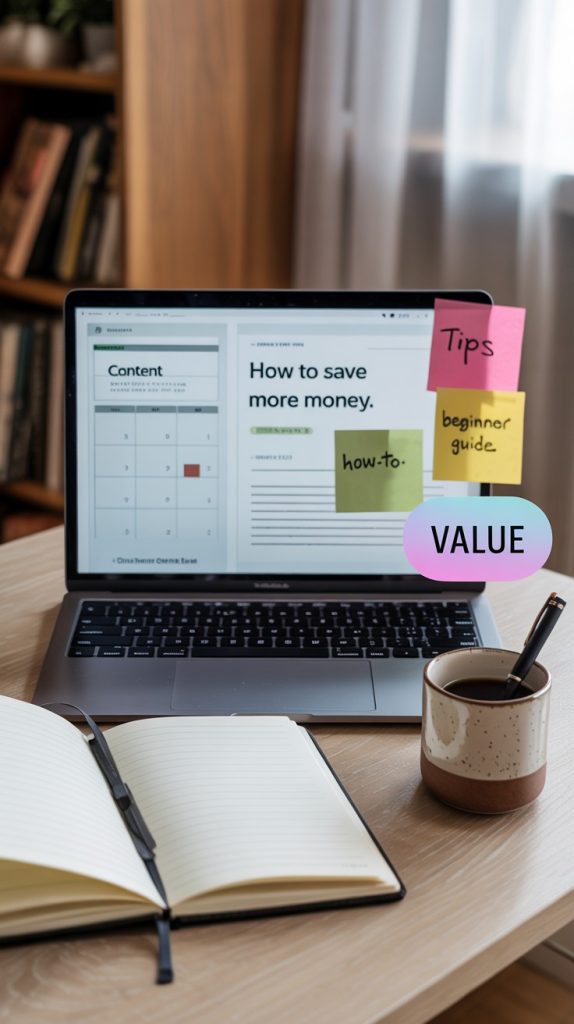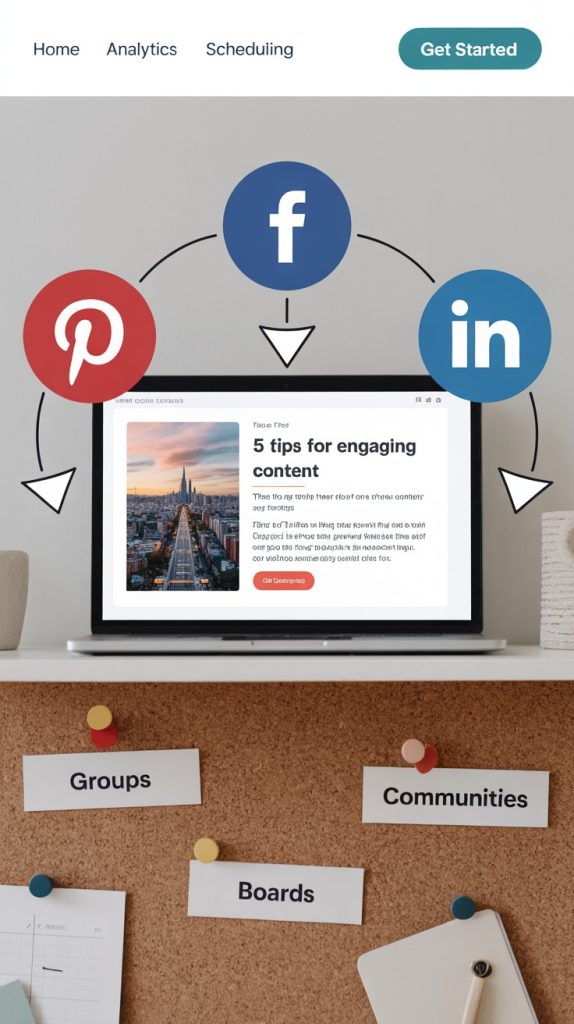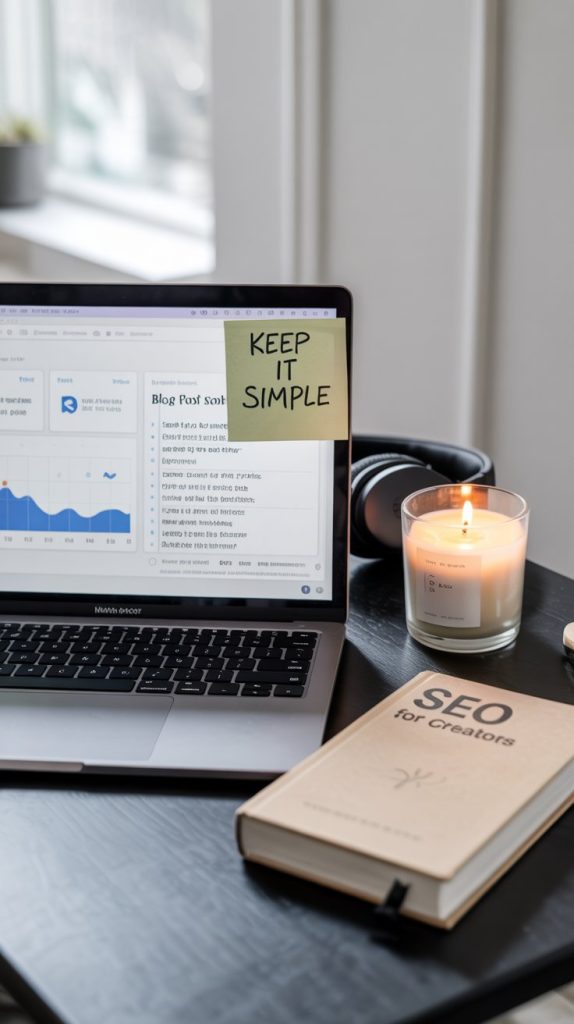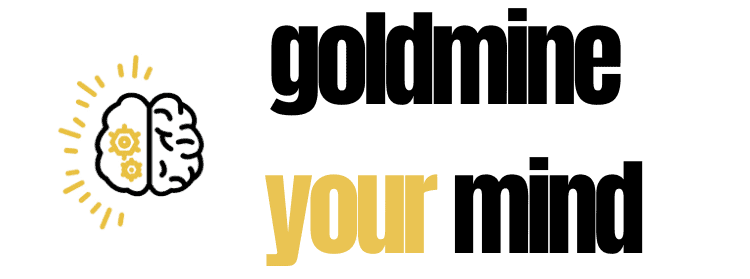Back in December 2024, I was deep in a YouTube rabbit hole, searching for income streams that aligned with my passion for helping others. That’s when I came across a video on affiliate marketing, which quickly opened the door to blogging. So I started reading more about how to start a blog and get traffic.
It clicked. I realized I could take my 10+ years of coaching and business consulting experience and start sharing my wins, lessons, and mess-ups with readers in a way that actually helps them.
So I started a blog.
It sounds exciting until you stare at the blank screen and think, “Where do I even start?” If you’re reading this, chances are you’re not trying to become the next BuzzFeed overnight. You just want to launch a blog that gets real traffic and (eventually) makes money.
And honestly, getting your first 100 visitors isn’t about going viral. It’s about setting up the right foundation, creating intentional content (that you’re passionate about), and showing up consistently.
I got my first 100 visitors in 21 days with no ads, no audience and no SEO background. How? I followed a focused plan that anyone can replicate.
Let me walk you through it.
Disclosure: Our website is reader-supported. If you purchase any service through our partner links, we may earn a commission at no extra cost to you.
Table of Contents
Step 1: Pick a Niche That People Are Already Searching For
You don’t need a super specific niche but you do need to know what kind of problems you’re solving for your readers.
If you want to learn how to start a blog and get traffic, the key is finding the sweet spot where your interests, experience, and market demand overlap.
Think less about what you want to write and more about what people are actively Googling at 1 AM when they’re desperate for answers. Solving those kinds of problems is how your blog starts gaining traction fast.
Ask yourself:
- What do I know a little more about than the average person?
- What am I curious or passionate enough about to write 20+ posts on?
- What problems can I help solve?
Real Examples:
- Busy mom: Launches “Meal Planning Hacks for Families”
- Fitness coach: Starts a blog on “Strength Training for Beginners”
- Freelancer: Builds a site about “How to Start Freelancing with No Experience“
Pro Tip: Use Google Trends and Pinterest to see what people are actively looking for.

Step 2: Choose a Blog Name + Get Hosting
This part stops a lot of people. Don’t overthink it. It doesn’t have to be perfect, it just has to be done.
I’ve seen blogs with awkward, clunky names pulling in thousands of monthly visitors because the content delivers real value.
Sure, branding helps in the long run but it won’t matter if you never start. Pick a name that’s easy to remember, get the domain, and keep it moving.
I’ve learned the hard way, progress beats perfection every time in the blogging game.
Domain Name Tips:
- Keep it simple and memorable
- Avoid hyphens and weird spellings
- Make sure it’s available on .com if possible
Where to Get Hosting:
- Bluehost or Hostinger are beginner friendly
- Namecheap if you want separate domain + hosting
- WordPress.org (NOT WordPress.com) is what you want for flexibility and ownership
You can be up and running with a blog in under an hour.

Step 3: Set Up Your Blog Like a Real Website
Don’t get lost in themes and colors. Just make it functional and clean. Your blog doesn’t need to look like a million dollar brand on day one, it just needs to work.
If you’re learning how to start a blog and get traffic, focus on creating a simple layout that’s easy to navigate and mobile-friendly.
Prioritize clarity over creativity. Make it clear who your blog is for, what problems you solve and where to find your content.
A solid foundation now means less headaches later when your traffic (and opportunities) start rolling in.
What You Need:
- A homepage that explains what your blog is about
- A simple about page with your story + mission
- A blog page that lists your posts
- A contact form (use WPForms or similar)
- A mobile-friendly theme like Astra or Kadence
Optional but useful:
- Install Google Analytics and Google Search Console from Day 1
- Add an email signup form using Kit

Step 4: Write 3-5 Value-Driven Blog Posts
Now we get to the good stuff – which is content.
Each post should answer a specific question or solve a problem.
This is what builds trust, drives traffic and makes people stick around. If you’re serious about learning how to start a blog and get traffic, it all starts with creating content that actually helps your target reader.
Each post should answer a specific question or solve a problem your target reader is currently dealing with.
Skip the vague stuff like “Why I Love Coffee”. This is because that kind of content doesn’t bring search traffic or help anyone.
Instead, focus on useful, actionable posts like “How to Budget with Irregular Income” or “Easy Meal Prep Ideas for Busy Moms.”
If someone reads your post and says, “That’s exactly what I needed,” you’re on the right track.
Instead, write posts like:
- “7 High-Protein Meals for Busy Moms”
- “Beginner’s Guide to Freelancing on Upwork”
- “How I Saved $1,200 with the 50/30/20 Budget Rule”
Post Structure Tips:
- Use headers (like H2s and H3s) to break up content
- Write short paragraphs and punchy intros
- Add a call-to-action at the end (comment, share, subscribe)

Step 5: Share Your Posts Where Your Audience Already Hangs Out
The traffic won’t magically come. You need to go out and get it.
That means showing up on the platforms your ideal readers are already using – like Pinterest, Facebook groups, TikTok, Reddit or LinkedIn.
Don’t just drop a link and bounce. Add value to conversations, answer questions, and share your posts as a genuine solution.
When someone says, “I’ve been struggling with this!” and your blog post fixes it? That’s how you start building trust and steady traffic, even without SEO or ads.
5 Smart Ways to Get Initial Blog Traffic:
- Pinterest: Create 3-5 pins per blog post. Use Canva to design them and schedule with Tailwind or Pinterest directly.
- Facebook Groups: Find niche groups and share helpful posts (not spammy links).
- Reddit: Search for relevant subreddits, contribute value, and drop your post where appropriate.
- LinkedIn: Great for business or B2B niches. Share the post with a personal story.
Goal: Focus on bringing 3–5 visitors/day. That’s all you need to hit 100+ in a month.

Step 6: Learn SEO Basics (But Don’t Stress Yet)
SEO is how you get long-term traffic from Google. But in the beginning, keep it simple.
You don’t need to master keyword research or backlinks right away, you just need to write content people are already searching for. If you’re learning how to start a blog and get traffic, this is one of the most important habits you can start early.
If Pinterest is your main traffic source, focus on keywords from Pinterest using PinClicks for data.
Use clear titles, include your main keyword naturally in the first paragraph and format your post with headings so it’s easy to read.
Think of SEO as a habit, not a hurdle.
Every time you write with search intent in mind, you’re planting seeds for future traffic that can keep growing month after month, even while you sleep.
Beginner SEO Checklist:
- Use a keyword in your blog post title and 1st paragraph
- Add 1-2 related keywords naturally
- Rename your images with descriptive filenames
- Use an SEO plugin like Yoast SEO
Example: Instead of titling your post “Meal Ideas for Busy Moms,” call it “10 Easy Dinner Recipes for Working Moms (30 Minutes or Less).”
That’s keyword-rich and clickable.

Step 7: Track, Adjust, and Stay Consistent
Blogging rewards consistency.
Don’t judge success by your first week’s stats. Instead, focus on showing up weekly, learning what works, and improving as you go.
Use tools like Google Analytics to track which posts are getting clicks, where your traffic is coming from and what your readers are engaging with.
If a post flops, tweak the headline or update the content. If one takes off, double down on that topic.
The goal isn’t to be perfect – it’s to keep publishing, keep testing and keep getting better.
Consistency compounds and over time, so does your traffic.
What to track early on:
- Blog post views (use Google Analytics)
- Traffic sources (Pinterest, Facebook, etc.)
- Which topics get the most clicks
Keep Going:
- Publish 1-2 posts/week (pick a number that you feel you can consistently commit to)
- Share each post on at least 2 platforms (Pinterest is a great place for discovery and clicks)
- Refresh or improve any posts that underperform
Final Thoughts: You Only Need One Post to Catch Fire
Your first 100 visitors won’t come all at once. But one blog post that makes it in the right Facebook group or hits Pinterest at the right time? That can change everything.
If you’re wondering how to start a blog and get traffic, the secret is simple: solve real problems, be consistent, and show up where your audience already hangs out.
Start simple. Stay consistent. And your first 100 visitors will turn into your first 1,000 before you know it.
👉 Follow me on Pinterest for more tips on wealth, money and business!
Looking to Earn More? Learn More About Side Hustles
- 5 Underrated Side Hustle Ideas that Make $8,000 a Month
- How to Make $1,000/Month Selling PDFs
- How to Sell on Etsy as a Beginner and Make Your First Sale
- How to Start Freelancing with No Experience
My Favorite Tools
To help you reach your financial goals, below are resources you can use to get started. They are free to sign up and will support your money goals.


Leave a Reply